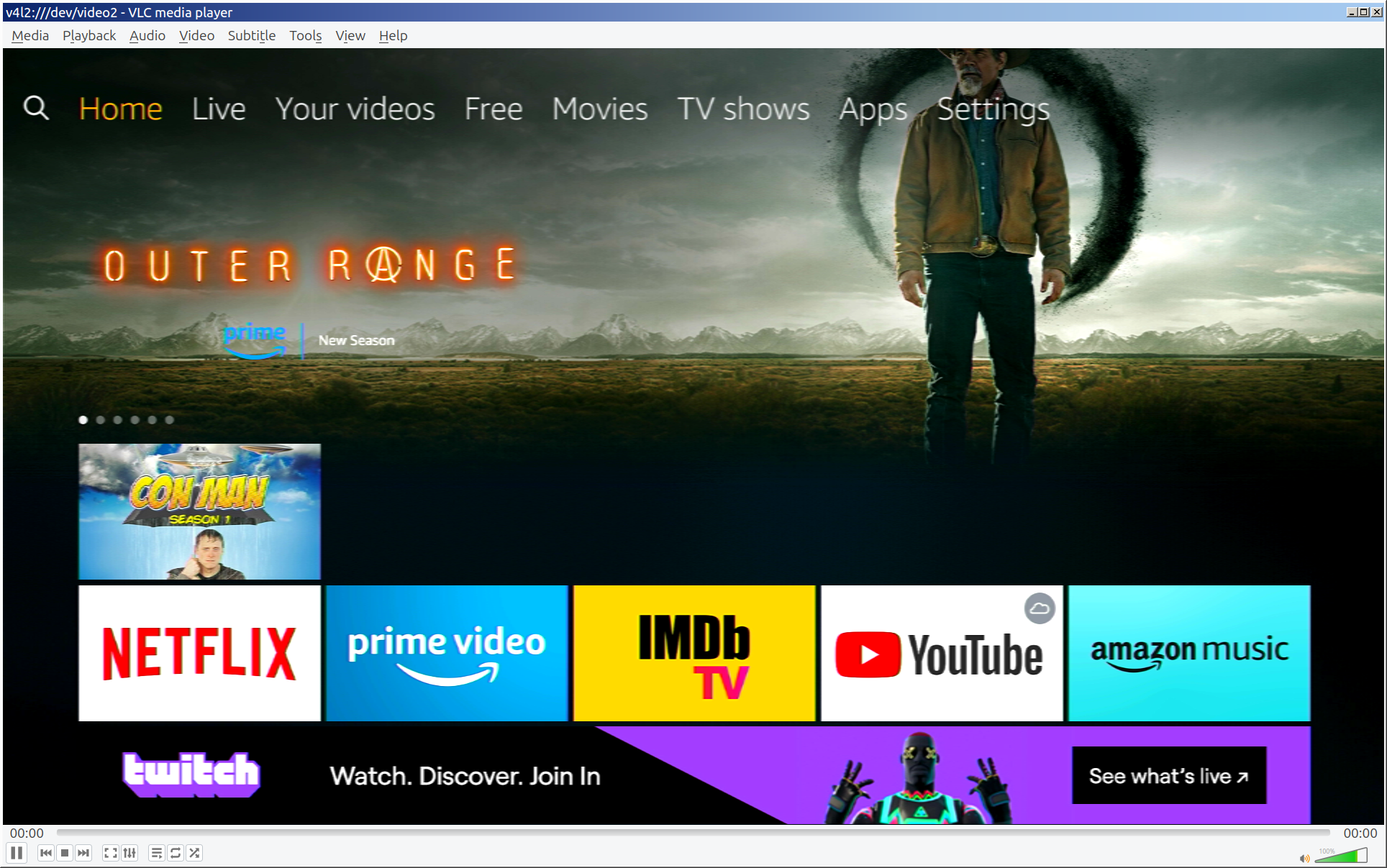Do those dongles actually work, and are they better than "marginally above crap"? Let's see what we can see.
When I plug the dongle into my Linux machine, it shows up as this USB device:
Bus 001 Device 038: ID 534d:2109 MacroSilicon
Searching around for those ID strings leads to the MacroSilicon MS2109 chip that powers the dongle that I have. I haven't pursued the innards of this chip, but it was easy to figure out that it's supported by the Linux v4l subsystem and presents as a pair of video devices.
crw-rw----+ 1 root video 81, 2 May 17 11:36 /dev/video2
crw-rw----+ 1 root video 81, 3 May 17 11:36 /dev/video3
At this point, I just needed any old HDMI video signal. I plugged in an Amazon Fire TV stick that was in my "send to the thrift store" box. I used vlc to open /dev/video2 as a capture device.

Hey, that worked! You can't see it, but the audio also played correctly. On my 4k monitor, that window with the FHD video doesn't look completely sharp, but it's good enough for the POC. Here's what vlc says about it:
It didn't really prove anything that I didn't already know was OK, but I also streamed that video. My first attempt was to use mjpg-streamer, which I had used in an earlier project., but some python thing was giving me a hard time today. Instead, I used µStreamer, which is part of the PiKVM project. It doesn't include audio for this kind of setup, but I was able to view the playing video in a web browser.
Next steps: I've ordered a newer dongle that has a USB 3.0 interface, and I have some beefier Linux boxes to try. I am cautiously optimistic.
 WJCarpenter
WJCarpenter
Discussions
Become a Hackaday.io Member
Create an account to leave a comment. Already have an account? Log In.